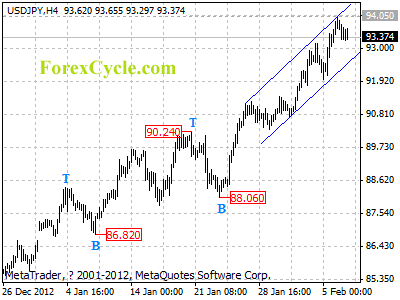Bubbles are blowing everywhere.
According to Bloomberg News this morning:
‘Yields on Mexican debt due in 2024 fell to an all-time low 5.07 percent after Gross, Pacific Investment Management Co.’s co-chief investment officer, said yesterday the peso was a “great currency” while praising the nation’s low debt level and interest rate stability. In June, Gross triggered a surge in the notes after saying he favored Mexican debt over German bunds…’
We don’t know much about Mexican bonds or the peso. But we do know that record low interest rates have had a big impact on stock prices.
And with the Australian stock market up 14.6% in just the last six months, most Aussie investors should have clocked up some strong gains. But that’s the past. What about the future?
After the big rally, are there any good value stocks trading on the ASX today? We think so, and we’ll show you where they are…
So, where do you look?
As you know, we’re obsessed with small-cap stocks…innovative stocks…technology stocks…game-changing breakthrough stocks.
But we don’t expect you to dump your entire wealth into those high-risk punts. If you’re investing in something potentially transformative, the key word is ‘potentially’…because ‘potentially’ the company may not succeed.
That’s part of the fun and excitement. Researching, analysing, reading about, and investing in these amazing companies. And if you manage to back the right one that has the right idea (and the ability to commercialise it) at the right time, you can make some terrific gains.
But as we say, you shouldn’t stick all your money into these stocks. You should start off with something much more boring, such as the five beaten-down blue-chip stocks we recommended last year.
Still Five Blue-Chips to Buy
In recent weeks we’ve received a number of emails asking if those five blue-chips are still worth buying. After all, with the market up 14.6% in just six months, and two of the recommended stocks up more than 35% during the same time, it’s a fair question.
You can see on the chart below how these blue chips stocks have performed:
The only stock to do worse than the S&P/ASX 200 is Harvey Norman Holdings Ltd [ASX: HVN]. Even so, it’s a better-than-the-bank 8.3% gain.
The others have done much better: Qantas [ASX: QAN] up 36.1%; JB Hi-Fi [ASX: JBH] up 20.5%; Toll Holdings [ASX: TOL] up 25.3%; and Myer Holdings [ASX: MYR] up 37.1%.
To our mind, this is why it’s dumb to invest in an index or fully diversify a stock portfolio.
If you talk to most financial advisors, they’ll tell you to have at least 10 stocks in your blue-chip portfolio. And many others will say you should have 20 stocks in order to diversify.
We’ve long believed that’s bad advice. You’re better off doing some decent research or getting good advice on 5, 6 or 7 stocks. You can then spread your blue-chip portfolio across those stocks.
It’s a method we personally use. We’ve just double-checked our portfolio, and we own five blue-chip dividend-paying stocks (by the way, we don’t own any of the five stocks mentioned in this letter. We prefer not to mix business with pleasure. We also own a few mid-cap and small-cap stocks, but we’re only talking about safe blue-chips in this letter).
But as we said earlier, that’s history, what about the future? Well, when we updated the 5 Beaten Down Blue-Chip Stocks report, it hit us that all five stocks are still a long way down from the 2007 peak (2009 peak for Myer which didn’t list until that year).
It Pays to Stay Small in Investing
To show you what we mean, Harvey Norman is still down 66.8%, Myer is down 32.9%, JB Hi-Fi is down 23.7%, Qantas is down 68.9%, and Toll Holdings is down 54.1%.
Now, just because a stock has fallen that far doesn’t mean to say it will recover anytime soon…if ever.
But it does help to put the recent stock market rally in perspective. Yes the market has gone bonkers in recent months, and there’s no guarantee you’ll see a repeat over the next six months. But the Australian share market is still a long way from where it was in November 2007.
In short, we see no reason to treat the market today any differently to six months ago. It was risky then and it’s risky now. But by the same token there are still some good bargains today as there were six months ago – the five stocks we’ve mentioned in this report are among them.
And if we are wrong…if stocks do fall, let’s ask you, would you rather have to sell five stocks to clear out your portfolio, or 10 or 20 stocks as most mainstream financial advisors recommend?
It’s a no-brainer in our opinion. In investing, small is beautiful – whether it’s small-cap stocks or just holding a small number of companies’ shares.
Cheers,
Kris
From the Port Phillip Publishing Library
Special Report: How to Hunt Down 2013′s Biggest Stock Market Winners
Daily Reckoning: How Australia-China Relations Are Caught in the Monetary Battle Space
Money Morning: Don’t be Long and Wrong on this Stock Market Rally
Pursuit of Happiness: Exchange Traded Options: A Way to Boost Your Retirement Income
Australian Small-Cap Investigator:
How to Make Money From Small-Cap Stocks

